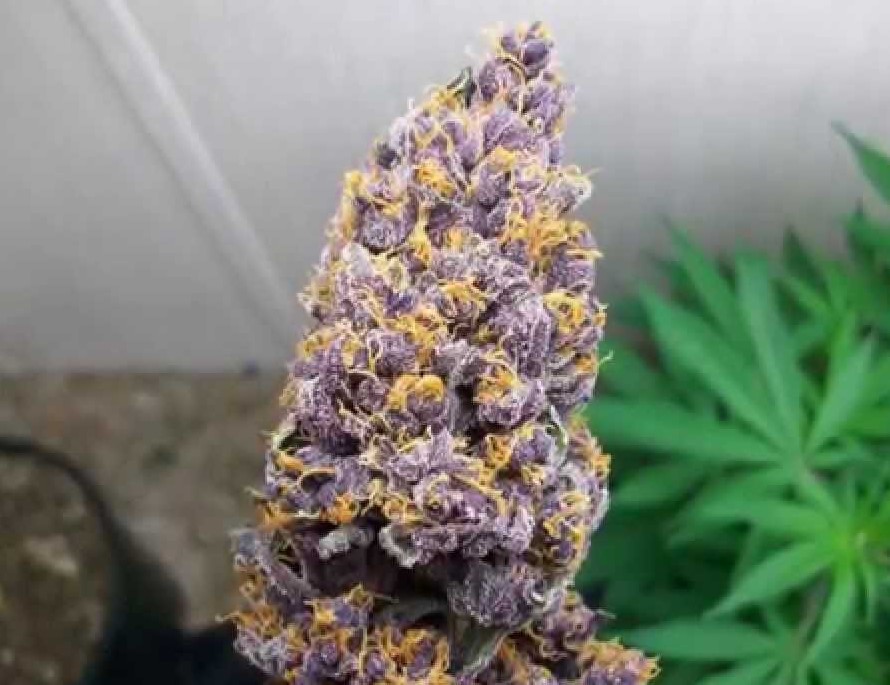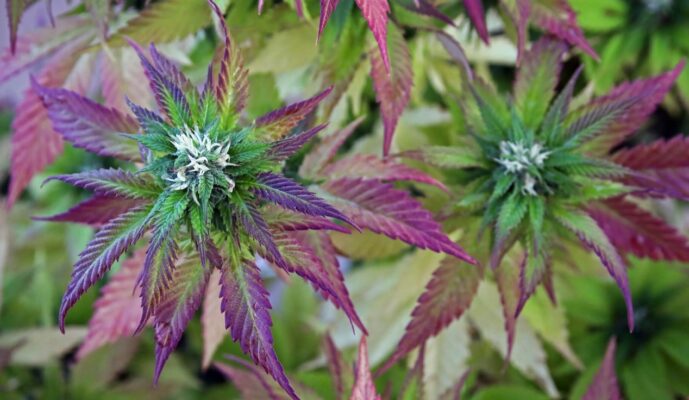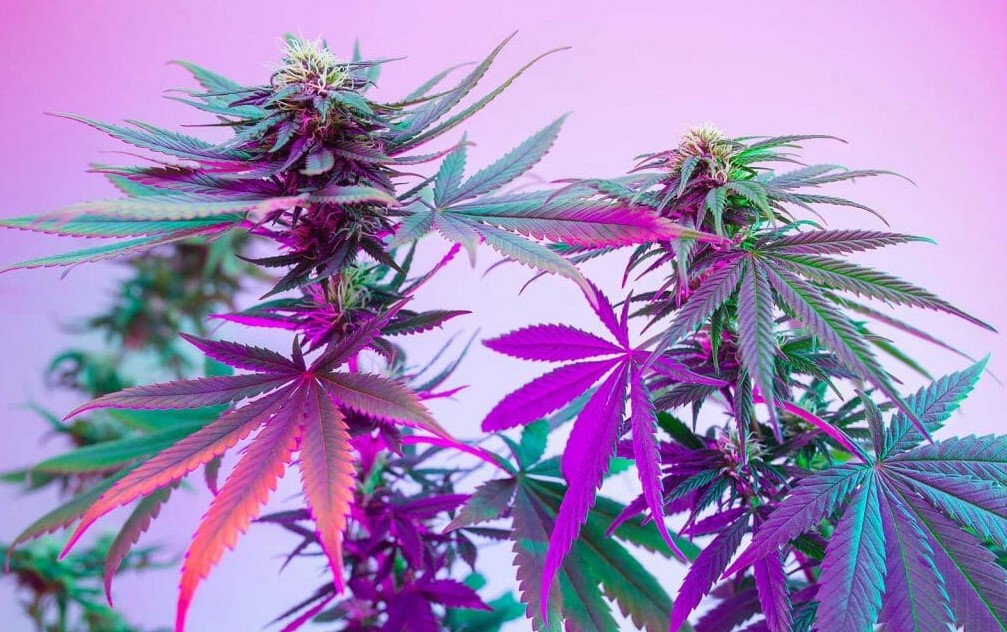Uncategorized
Colourful Weed: How to Grow
Gardens are often graced with vibrant colours, many of which come from cannabis plants. But what gives them such unique hues? Several factors play a role, including pH, temperature, genetics, and an array of pigments found in the leaves and flowers. Discover more about the rainbow of colours cannabis can exhibit.
Cannabis has a lot of names, which is unusual for a plant. Cannabis users are big fans of the term “the green.” While most strains are green in color, there are many more hues of cannabis available. Breeders have developed hundreds of distinct cultivars during the last several decades, resulting in massive genetic diversity. Colorful cannabis with colors including purple, yellow, orange, blue, red, pink, and even black is now accessible to growers for sale.
But what causes marijuana to be so colorful? You’ll learn all about it in the following sections! It’s all about genetics, external factors, and specialized plant-based chemicals. Below, you’ll discover which compounds give rise to each of cannabis’ many hues, as well as their other roles in the plant.

Understanding the Many Colours of Cannabis
The leaves of a green fan are an international sign for cannabis. They appear in movies, T-shirts, social media posts, and album covers. While this beautiful green hue is the color of most strains, there’s a wide array of hues available to consumers and producers to discover.
Cannabis isn’t the only plant associated with one hue, despite it having many variations. Many fruits and vegetables also suffer from this visual limitation, including carrots, salad leaves, and tomatoes. If you take a trip to the supermarket though, you’ll notice that there are hundreds of heirloom varieties of each vegetable-and many of them come in colors other than red or green!
Cannabis is no different. While the color of a bud has little bearing on how it will affect you, being able to select from an extensive variety of hues adds another layer of pleasure and convenience to the experience. While all seedlings and early juvenile plants have green leaves, plants typically “turn on” distinct colors during the flowering stage. Buds, sugar leaves, and fan leaves steal the show here.
What Are Anthocyanins?
Have you heard of anthocyanins? These molecules, classified as flavonoids, have been in the news a lot lately because they are being studied for potential health benefits like antioxidant properties. Anthocyanins give plants tinges of red, purple and blue – like blueberries, red cabbage, cranberries , cherries , aubergine and purple potatoes .
Scientists have currently discovered over 700 anthocyanins. These molecules are created by plants as secondary metabolites in order to draw in helpful insects and protect the plant from biotic (viruses, bacteria, fungi, and insects) and abiotic (UV rays and intense heat) stressors. These vibrant phytochemicals are one of the reasons weed come in many colors; however, they do not work independently. pH also has a large impact. For example, at a neutral pH level of 7, Anthocyanins show off reddish-purple hues whereas in an acidic range of 1-6, their shades become red-pink ,and finally green tones appear when alkaline at pH 8-14.
What Cannabis Colours Are There?
Let’s take a closer look at all of the possible colors different cannabis strains may have, as well as the specific phytochemicals that contribute to their exquisite beauty.
Green (Chlorophyll)
Cannabis plants begin life as bright green seedlings, and the vast majority of them maintain this hue throughout their development. What causes a cannabis plant to be green, then?
The term “photosynthesis” likely brings back memories of high school biology class. This is the process where plants convert light energy into carbohydrates, which are then utilized to support plant growth and development. Chlorophyll, a green pigment, enables plants to absorb light energy—these molecules are stored in chloroplasts, tiny structures embedded within plant cells. Mitochondria are tiny, energy-producing organelles found in plant cells that appear green. They don’t differ much from human cell mitochondria, which aid in the transformation of carbohydrates and fats into energy. Cannabis leaves turn green as a result of the cells containing these small energy factories and the colorings they store.
Yellow & Orange
Why do some cannabis strains take on hues of orange and yellow if chlorophyll is responsible for their green color? Great question! Carotenoids are another set of phytochemicals that contribute to the creation of these brilliant colors. The carotenoid family of molecules are a class of yellow, orange, and red organic pigments found in nature. They work as antioxidants and colour attractants while also providing the precursor to plant hormones. Carotenoids help with photosynthesis, among other things.
Out of the 750+ carotenoids that have been discovered, these specific ones are found in cannabis leaves:
β-Carotene Lutein Violaxanthin Neoxanthin β-Cryptoxanthin
Carotenoids contribute either a yellow or orange hue to cannabis leaves and flowers, depending on the concentrations present in particular cultivars. Strains best known for their orange appearance include Agent Orange and Tangerine Dream.
Red & Pink
Both anthocyanins and carotenoids give cannabis strains their red and pink hues. Carotenoid lutein, in particular, absorbs blue light to appear orange-red at high concentrations. However, exposed to an acidic pH, anthocyanins also develop a red-pink shade – which is perfect for cannabis plants that thrive in a slightly acidic pH of 5.8-6.2 . Some well known cultivars known for their beautiful red and pink colours include Black Russian, Red Poison Auto, and Panama-Sedena Red.
Purple and Blue
In recent years, purple cannabis has become increasingly popular among consumers and growers alike. These colourful buds are created by anthocyanins, which are pigments that underpin many shades of purple. When exposed to a more neutral pH range, these pigments become even more vibrant. Two of the most vibrant purple cultivars available are Purple Queen and Purple Queen Automatic.

Black & Brown
Cannabis plants that look black and brown are actually displaying deep shades of purple (similar to those seen in some types of eggplant). These strains have high levels of anthocyanins, possibly due to a recessive gene that increases the conversion of glucose into these colorful pigments. With the right genetics, and when exposed to a more neutral pH, cannabis strains can produce these astonishing, rich hues.
What Causes Cannabis to Change Colour?
In case you need a recap, here are some of the main reasons why cannabis changes colours:
- Genetics: After much selective breeding, some plants now produce higher levels of colourful pigments.
- Specific phytochemicals: Specific phytochemicals are responsible for the different colors in cannabis plants. To put it another way, if your strain doesn’t have naturally high levels of anthocyanin, you won’t be able to grow purple marijuana.
- pH: The hue of an anthocyanin is affected by the pH range.
- Stress: Anthocyanin production is stimulated by several stressors, including UV radiation.
- Temperature: During the cooler nighttime temperatures at the end of a growing season, or when simulated indoors, plants focus less on chlorophyll production and more on anthocyanin output.
Is Bud Colour an Indication of Potency?
Many people believe that the colour of a cannabis bud can determine the effects or potency of specific cultivars, but this is not always accurate. Strains that produce low levels of THC can actually produce high levels of purple pigments. Also, strains loaded with psychoactive cannabinoids may appear purely green. Don’t rely on aesthetics as your only measure for choosing cannabis; Instead, consider other factors such as the history and purpose of the strain.
How to Change the Colour of Cannabis
You’ve just upgraded your cannabis cultivation skills by learning why certain strains have various colors. You understand that anthocyanins are vibrant pigments that vary color when subjected to different pH levels, and some cultivars contain carotenoids responsible for generating orange and yellow hues. After selecting the right genetics and ensuring the pH and temperature are controlled, you can start to add color to your grow tent or garden with shades of purple, red, pink, orange, yellow, and black!


